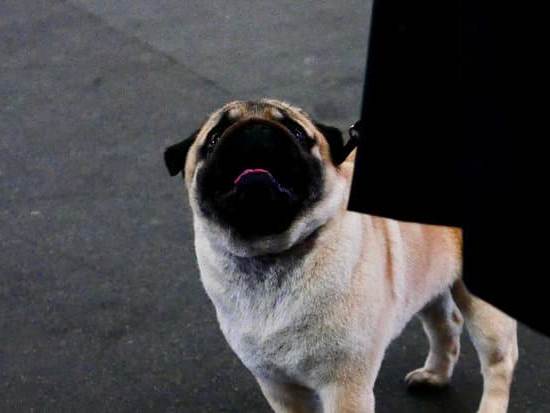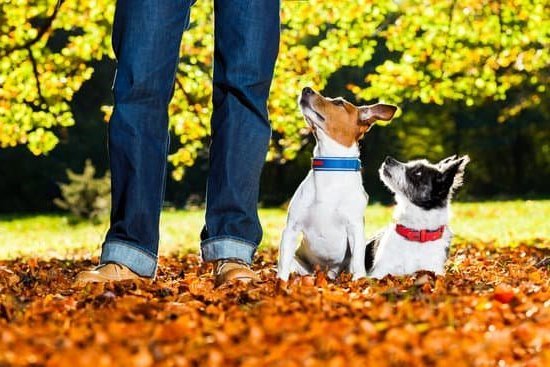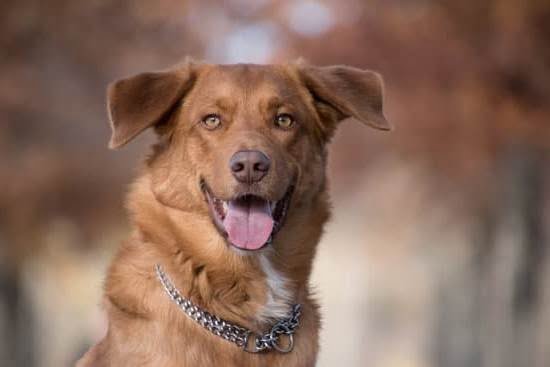Are you struggling with a furry friend who just can’t seem to grasp the concept of doing their business outside? In this article, we will explore the various methods and techniques on how to train dog pee in the house. From understanding the reasons behind in-house peeing to positive reinforcement training methods, we’ll cover it all.
One of the first steps in addressing this issue is understanding why your dog might be having accidents indoors. Whether it’s due to anxiety, lack of proper training, or other underlying health issues, pinpointing the cause is crucial in effectively addressing the problem. By delving into the reasons behind in-house peeing, you can tailor your approach to best suit your dog’s specific needs.
Establishing a routine for potty breaks and utilizing positive reinforcement training methods are also key components in successfully training a dog to pee outside. Additionally, managing your dog’s food and water intake, incorporating crate training for housebreaking, and maintaining patience and consistency throughout the training process are important aspects that contribute to long-term success. Stay tuned as we delve deeper into these important strategies for a well-behaved and house-trained canine companion.
Establishing a Routine for Potty Breaks
When it comes to training a dog to pee in the house, one of the most important aspects is establishing a routine for potty breaks. Dogs thrive on routine and consistency, so creating a regular schedule for when they go outside to relieve themselves is crucial in preventing accidents indoors.
Here are some tips for establishing a routine for potty breaks:
- Take your dog outside first thing in the morning, as soon as they wake up.
- Bring them outside after meals, as eating often stimulates their need to eliminate.
- Set specific times throughout the day for potty breaks, such as mid-morning, mid-afternoon, and before bedtime.
By sticking to a consistent routine, you are helping your dog understand when and where they should be going to the bathroom. This predictability will reduce the likelihood of accidents happening inside the house and ultimately aid in successful housebreaking. Remember that patience and persistence are key when establishing a routine for potty breaks with your dog.
Positive Reinforcement Training Methods
Training your dog to pee in the house can be a challenging process, but positive reinforcement methods can make it easier for both you and your pet. Positive reinforcement involves rewarding your dog with praise, treats, or toys when they exhibit the desired behavior, in this case, peeing outside rather than inside.
One effective positive reinforcement method is clicker training. This involves using a small device that makes a clicking noise to mark the exact moment your dog performs the desired behavior. You can then follow up with a reward, such as their favorite treat. Over time, your dog will associate the clicking sound with receiving a reward for peeing in the appropriate place.
Another positive reinforcement technique is using verbal praise and physical affection. When you take your dog outside and they pee in the designated spot, immediately give them enthusiastic verbal praise like “Good boy.” or “Good girl.” along with gentle pets or pats on their head. This positive feedback will reinforce the behavior and encourage them to continue peeing outside.
Using positive reinforcement training methods requires consistency and patience. It’s important to always provide rewards when your dog pees in the appropriate place, and to avoid punishment for accidents inside the house. With time and dedication, these methods can be highly effective in training your dog to pee outside.
| Positive Reinforcement Method | Description |
|---|---|
| Clicker Training | A method that uses a clicking noise from a device to mark desired behavior, followed by a reward. |
| Verbal Praise and Affection | Rewarding your dog with enthusiastic verbal praise and physical affection when they pee outside. |
| Consistency and Patience | Reinforcing good behavior through consistent rewards and avoiding punishment for accidents inside. |
Managing Food and Water Intake
One important aspect of house training a dog is managing their food and water intake. By controlling when and how much your dog eats and drinks, you can better predict when they will need to go outside for a potty break. Here are some tips for managing food and water intake while training your dog to pee in the house:
- Mealtime Routine: Establish a regular feeding schedule for your dog. This will help regulate their digestion and make it easier to predict when they will need to go outside.
- Limit Water Access: While it’s important to keep your dog hydrated, try to limit their access to water in the hours leading up to bedtime or when you won’t be home for an extended period of time.
- Monitor Treats: Keep track of the treats and snacks you give your dog throughout the day, as these can contribute to their need to urinate more frequently.
By being mindful of your dog’s food and water intake, you can better manage their bathroom needs and reduce the likelihood of accidents inside the house.
Remember that every dog is different, so it may take some trial and error to find the right balance of food and water for your pet. It’s also important to consult with a veterinarian if you have any concerns about your dog’s diet or bathroom habits. With patience and consistency, you can effectively manage your dog’s food and water intake as part of their house training routine.
Utilizing Crate Training for Housebreaking
One effective method for housebreaking a dog is to utilize crate training. Crate training can be helpful in teaching a dog to control their bladder and avoid accidents inside the house. By creating a positive association with the crate and using it as a tool for potty training, pet owners can effectively teach their dogs to pee outside the house.
When utilizing crate training for housebreaking, it is important to choose an appropriately sized crate for the dog. The crate should be just big enough for the dog to stand up, turn around, and lie down comfortably. A crate that is too large may give the dog extra space to pee without feeling discomfort, while a crate that is too small may be uncomfortable for the dog.
Additionally, it is essential to establish a feeding and potty schedule when incorporating crate training into the housebreaking process. By feeding the dog at set times and then taking them outside shortly after eating, pet owners can help regulate their dogs’ bathroom habits.
This routine will also help the dog learn that peeing outside results in positive reinforcement and rewards, fostering good behavior. Overall, utilizing crate training as part of a comprehensive housebreaking plan can contribute significantly to successfully training dogs to pee outside the house.
Consistency and Patience in Training
When it comes to training a dog to pee in the house, consistency and patience are crucial elements. Dogs, like humans, thrive on routine and repetition, so maintaining consistency in your training approach is key to successfully housebreaking your pet. Patience is also essential, as learning this new behavior can take time and may involve setbacks along the way.
Establishing Clear Expectations
Consistency in training begins with establishing clear expectations for your dog. This means setting specific times for potty breaks, using the same designated spot for elimination, and consistently reinforcing desired behaviors. It’s important to stick to a regular schedule for potty breaks to help your dog develop a routine and understand when it’s appropriate to eliminate.
Positive Reinforcement
Using positive reinforcement techniques, such as praise, treats, or rewards, can help reinforce good behavior and encourage your dog to continue peeing outside. Consistently rewarding your dog for eliminating in the appropriate spot will help them understand what is expected of them. Remember to be patient during this process, as it may take time for your dog to fully grasp the concept.
Managing Setbacks
While consistency is important, it’s also essential to be patient and understanding when accidents occur. Dogs may have setbacks during the housebreaking process, especially if they are young or new to your home. Instead of getting frustrated, remain patient and continue with consistent training methods.
Punishment should be avoided when accidents happen, as it can cause confusion and anxiety in your pet. Remember that housebreaking takes time and dedication, but with consistent training and patience, your dog will eventually learn to pee outside rather than in the house.
Cleaning and Deodorizing Accidents
Accidents happen, especially when you’re in the process of training your dog to pee outside. Despite your best efforts in establishing a routine and using positive reinforcement, your furry friend may still have accidents inside the house. When this happens, it’s crucial to clean and deodorize the area properly in order to prevent repeat incidents.
Immediate Action
As soon as you discover an accident, it’s important to act fast. Use paper towels to soak up as much of the urine as possible. Avoid using any harsh chemicals or ammonia-based cleaners, as these can actually attract your dog back to the same spot due to their strong scent.
Effective Cleaning Products
After soaking up the urine, use a pet-specific enzymatic cleaner to thoroughly clean the affected area. These cleaners are designed to break down the odor-causing compounds in urine, effectively eliminating any lingering scent that might attract your dog back to that spot.
Preventing Repeat Accidents
In addition to cleaning up accidents properly, it’s also important to make sure that your dog doesn’t have access to areas where they’ve had accidents before. Consider using baby gates or closing doors to restrict access until your dog is fully trained. Additionally, ensure that all soiled items such as rugs or carpets are properly cleaned and deodorized so that they don’t continue to attract your dog back for another accident.
By taking immediate action and using effective cleaning products, you can prevent repeat accidents and reinforce proper potty behavior with your dog. Remember that consistency in training and patience are key factors in successfully housebreaking your furry companion.
Seeking Professional Help if Needed
In conclusion, house training a dog to pee in the appropriate place can be a challenging but ultimately rewarding process. By understanding the reasons behind in-house peeing and establishing a routine for potty breaks, pet owners can begin to address this issue effectively.
Additionally, positive reinforcement training methods, managing food and water intake, and utilizing crate training can all contribute to successful housebreaking. Consistency and patience are key components of any training regimen, and cleaning and deodorizing accidents promptly can help discourage repeat incidents.
However, despite these efforts, some dogs may continue to struggle with house training. In such cases, seeking professional help from a veterinarian or dog trainer may be necessary. These professionals can evaluate the situation more thoroughly, identify any underlying health issues contributing to the problem, and provide expert guidance on how best to address the issue. This individualized approach can make a significant difference in successfully training a dog to pee in the appropriate place.
It is important for pet owners not to become discouraged if their dog’s housebreaking progress is slow or if they encounter setbacks along the way. With dedication, patience, and perhaps professional assistance when needed, most dogs can eventually learn to consistently pee outside or in designated indoor areas without issue.
Frequently Asked Questions
How Do You Train a Dog to Pee Indoors?
Training a dog to pee indoors is typically not the ideal situation, as it’s usually encouraged to house train them to go outside. However, if it is necessary for a specific reason, like a health issue or extreme weather conditions, it’s important to designate a specific area indoors for the dog to relieve itself and consistently take them to that spot.
Using positive reinforcement and praise when they use the designated indoor spot can also help reinforce this behavior.
What Helps With Dogs Peeing in the House?
There are several things that can help with dogs peeing in the house. First and foremost, proper house training from an early age is crucial. Establishing a routine for potty breaks and rewarding them for going outside can help prevent accidents indoors.
Additionally, monitoring their water intake and scheduling regular bathroom breaks can minimize the likelihood of accidents inside. When accidents do occur, it’s important to thoroughly clean and deodorize the area using products specifically designed for pet messes to discourage repeat offenses.
Why Does My Dog Keep Peeing in the House After Being Outside?
If your dog continues peeing in the house after being outside, there may be underlying reasons such as anxiety, medical issues, or insufficient outdoor time. Anxiety or stress can lead to behavioral issues like inappropriate urination, so providing a calm and secure environment is essential.
It’s also important to rule out any potential medical causes by consulting with a veterinarian. Ensuring that your dog has adequate opportunities for exercise and outdoor time to properly relieve itself can also help reduce indoor accidents.

Welcome to the blog! I am a professional dog trainer and have been working with dogs for many years. In this blog, I will be discussing various topics related to dog training, including tips, tricks, and advice. I hope you find this information helpful and informative. Thanks for reading!





